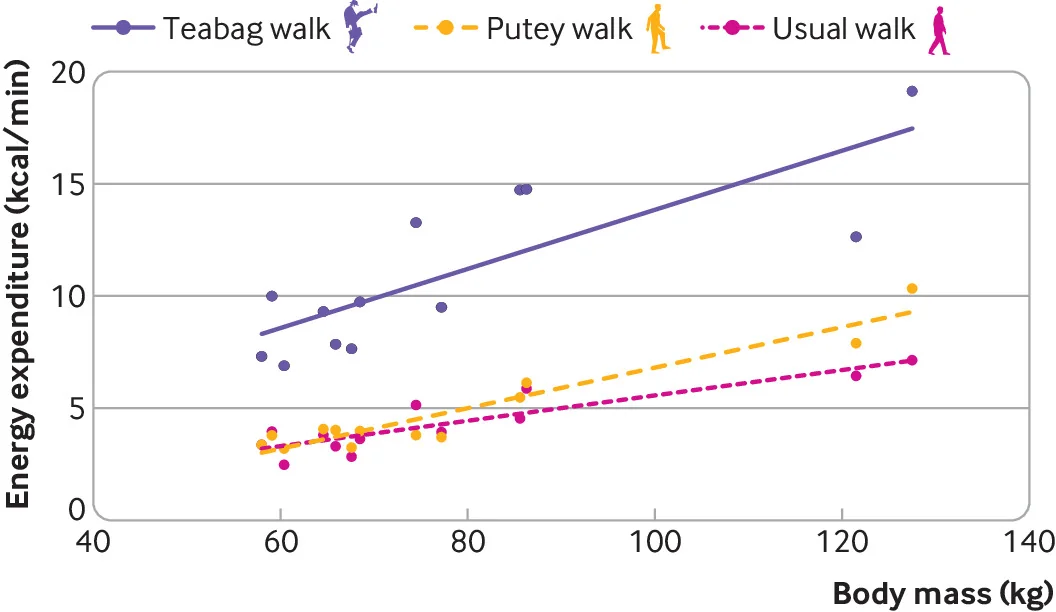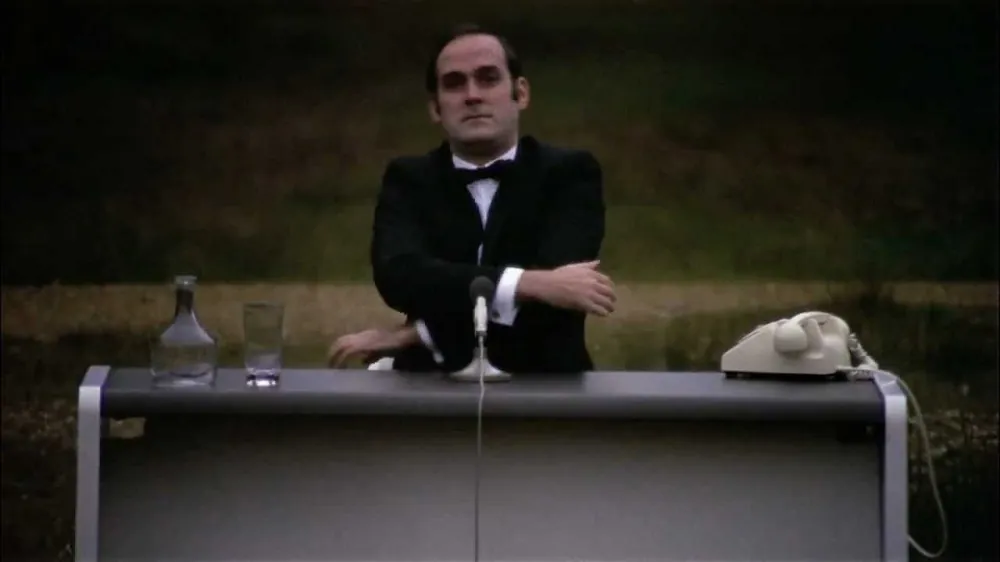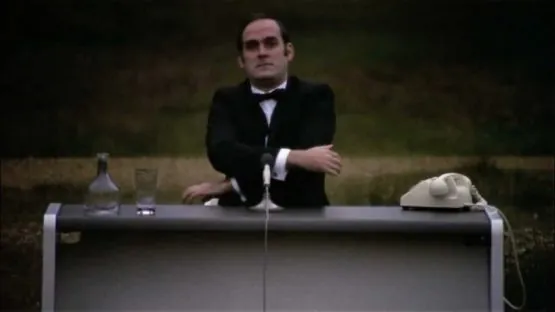Researchers have shown that a particular walking style that many people immediately recognize can count as high-intensity exercise [1].
Does exercise have to be boring?
In the fight against aging, anything goes. As we have reported numerous times, exercise is one of the most effective anti-aging interventions known to humans. Physical activity, especially of high intensity, confers many important health benefits, including increased cardiovascular fitness [2]. It also has been linked to lower mortality [3].
Sadly, high levels of physical activity are hard to maintain; otherwise, this wouldn’t be America’s top New Year’s resolution. Hence, there is an urgent need for high-intensity exercise that is affordable, readily available even to a sedentary city-dweller, safe, and, preferably, more fun than the local gym. That’s a lot to ask for, but a group of scientists came up with an ingenious solution. The results of their groundbreaking study were published in the special holiday edition of the prestigious British Medical Journal.
Ridiculously effective
The researchers asked 13 healthy volunteers to recreate the silly walks from “Ministry of Silly Walks”, a memorable sketch by Monty Python. In this sketch, Mr. Teabag, acted by John Cleese, employs a hilarious gait to get to his workplace at the Ministry of Silly Walks, where he is awaited by Mr. Putey (Michael Palin), an inexperienced wannabe asking for a government grant in order to continue the development of his own silly walk.
However, Mr. Putey’s prototype walk turns out to be rather underwhelming, and Mr. Teabag is reluctant to approve the request. He cites the dire financial situation at the ministry, which is funded worse than the Ministry of Defense, despite being at least as important (something that we in the longevity community can relate to).
While imitating the two characters’ movements, the participants in this study had to wear gear that measured their CO2 emissions, which is a common method of assessing exercise intensity. Confirming Mr. Teabag’s skepticism, the “Putey walk” increased energy expenditure only slightly, while attempts to imitate Mr. Teabag’s mastery proved much more energy-consuming. In men, the average energy expenditure during the “Teabag walk” reached 8.7 METs (resting metabolic equivalents), which is on par with cycling and jogging. In women, it was slightly less: 7.1 METs. Anything above 7 METs usually qualifies as high-intensity exercise.
Each minute of “Teabag walking” resulted in burning an average of 8 more kilocalories in men and 5.2 in women compared to participants’ regular gaits. Energy expenditure, as expected, was linearly and positively correlated with body mass.

Previous research suggests that as few as 75 minutes of vigorous physical activity per week robustly reduce disease and mortality risks [4]. This threshold can be achieved by simply doing your daily walking Teabag-style. Also, a study that we recently covered showed that even short bursts of vigorous activity, a minute or two in duration, can have an effect comparable to much longer bouts.
The researchers theorize that evolution favors the most energy-efficient forms of locomotion, which makes achieving high energy expenditure harder. “Inefficient walks”, as they call them, such as those featured in Monty Python’s sketch, help to solve this problem. The scientists stress that their intention was in no way to mock people with unusual gaits or physical disabilities.
Jolly good fun
An additional important component sets silly walking apart from most other types of exercise, increasing its attractiveness as a potential anti-aging intervention. Research has shown that laughter is associated with lower all-cause and cardiovascular mortality [5]. Not only did the scientists report high levels of laughter from the participants themselves, a “Teabag walker” in an urban setting would reliably elicit laughter from numerous passers-by, thus raising overall life expectancy.
We did not measure minutes spent laughing or number of smiles as secondary outcomes while walking inefficiently. Smiling during the inefficient walking trials could not be observed due to participants’ mouths being obscured by the facemask worn during data collection. However, all participants were noticeably smiling upon removal of the facemask. Moreover, bursts of laughter from the participants were frequently noted by the supervising investigator, almost always when participants were engaging in the Teabag walk.
Conclusion
This study proves yet again that art can be prophetic, but due to its small sample size, more research is needed. Although this clearly has immense potential importance for public health, it is never possible to determine if the necessary funding will be secured, and we cannot speculate as to whether or not the NIH will accept silly walks as part of its remit. Meanwhile, people have been taking matters into their own hands with local Silly Walks events. As International Silly Walk Day is tomorrow, it’s the perfect opportunity to practice.
Literature
[1] Gaesser, G. A., Poole, D. C., & Angadi, S. S. (2022). Quantifying the benefits of inefficient walking: Monty Python inspired laboratory based experimental study. bmj, 379.
[2] Nystoriak, M. A., & Bhatnagar, A. (2018). Cardiovascular effects and benefits of exercise. Frontiers in cardiovascular medicine, 5, 135.
[3] Lee, D. H., Rezende, L. F., Joh, H. K., Keum, N., Ferrari, G., Rey-Lopez, J. P., … & Giovannucci, E. L. (2022). Long-term leisure-time physical activity intensity and all-cause and cause-specific mortality: a prospective cohort of US adults. Circulation, 146(7), 523-534.
[4] Kraus, W. E., Powell, K. E., Haskell, W. L., Janz, K. F., Campbell, W. W., Jakicic, J. M., … & 2018 Physical Activity Guidelines Advisory Committee. (2019). Physical activity, all-cause and cardiovascular mortality, and cardiovascular disease. Medicine and science in sports and exercise, 51(6), 1270.
[5] Sakurada, K., Konta, T., Watanabe, M., Ishizawa, K., Ueno, Y., Yamashita, H., & Kayama, T. (2020). Associations of frequency of laughter with risk of all-cause mortality and cardiovascular disease incidence in a general population: findings from the Yamagata study. Journal of Epidemiology, 30(4), 188-193.




